If Russian Forces Come by Sea: The Odesa-Transnistria Scenario
Putin hasn’t given up the idea of bringing war to Ukraine’s major port city of Odesa (Odesa). While the city of Mariupol is needed to create a land bridge from Russia to occupied Crimea, Odesa is needed to create a direct connection to occupied Transnistria.
Transnistria is only reachable through Ukraine or Moldova, and since Russia has begun its war against Ukraine the only way for Russia to reach, resupply and support Transnistria is through Romanian airspace and Moldova’s main airport at Chișinău. But Russia cannot supply Transnistria with fresh ammunition and modern weapons through the airport because Moldova inspects every incoming plane. Therefore Russia will sooner or later attack Odesa in order to open a direct supply line to Transnistria and to deprive Ukraine of its most important port, thus weakening Ukraine’s economy even further. For the last year Russian agents have repeatedly infiltrated the city from Transnistria to place bombs at offices and business locations of pro-Ukrainian civil society organizations. This terror campaign is meant to intimidate the city’s population and facilitate a coming Moscow-engineered “uprising.”

This staged “uprising” will come just days before Russia’s military will attack Odesa: first Russian agents and Transnistrian volunteers will join with corrupt Ukrainian police officers (of which sadly there is an endless supply) and a few local pro-Russian idiots to create death and destruction in Odesa. Personally I believe that between May 2nd and May 9th there is a high risk of such “unrest,” as these dates are key in Russia’s current propaganda: last year on May 2nd Russia’s first attempt to seize Odesa was defeated by the citizens of Odesa, who took it upon themselves to eliminate Russia’s agents and mercenaries when Odesa’s corrupt police openly aided the armed Russian. Therefore the days between the 1st anniversary of this failed attack and the 70th anniversary of the end of World War 2, which was the last time Russia successfully expanded its colonial empire, are likely to see increased Russian terror activity in Odesa.
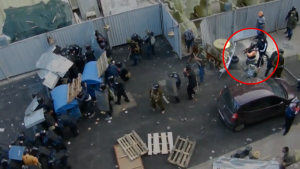
Nowadays Ukraine’s 28th Mechanized Brigade and a battalion of Ukraine’s National Guard garrison Odesa. Therefore any Russian-staged unrest would quickly fail in bloodshed, which is exactly what the Kremlin wants. Putin needs rivers of blood, preferably on the famous Potemkin Stairs, as a pretext to send the Russian Navy and Air Force to attack Odesa.
Putin needs a massacre in Odesa to justify a direct military intervention and therefore there will be one. As soon as Russian propaganda has the massacre it needs, Russian and Transnistrian forces without insignia will attack Odesa from the rear. Once again Russia will pretend that these forces are local self-defense, who bought their tanks, artillery and other equipment in a shop. However these forces are too small to take Odesa, but they are needed as neither the Russian Black Sea Fleet nor the Russian Air Force could stage a direct attack on Odesa without an attack from the rear to distract Ukrainian forces.
Until 2013 Russia’s Black Sea Fleet had four Ropucha-class and three Alligator-class landing ships, but since the occupation of Crimea at least two more Ropucha ships have arrived at Sevastopol and Russia kept Ukraine’s Kostiantyn Olshansky Ropucha-class ship. This fleet could transport about 1200 troops with 30 tanks and 200 vehicles to Odesa, which is not enough to defeat Ukraine’s 28th Mechanized Brigade. It is not even enough to secure a beachhead, especially as there is a good chance that Ukraine’s coastal missile artillery and 299th Tactical Aviation Brigade based near Mykolaiv with its Su-25 fighters would sink some of the Russian ships.
Likewise Russia’s Air Force on its own is unable to stage an air landing in Odesa, as Ukraine’s air defense radars would pick up the Russian planes as they pass the Black Sea giving Ukraine ample time to ready its 160th Anti-Aircraft Artillery brigade in Odesa, which armed with S-300 air-defense systems would shoot down dozens of Russian planes. Therefore Russian forces will first attack Odesa from the rear to eliminate Ukraine’s coastal artillery and 160th Anti-Aircraft Artillery brigade.
Just 60km without any natural obstacles lie between Transnistria and Odesa, allowing a combined Transnistrian-Russian mechanized force of 3,000 troops to reach Odesa in less than two hours. Such a force would also secure the beaches to the South of Odesa to ensure a Russian amphibious landing there could proceed uncontested. Worst of all such a force would not only suppress Ukraine’s air-defense capabilities through artillery fire, but it would also conquer the undefended Lymanske Airport, which lies just 3km behind the Transnistrian border.
With the 160th Anti-Aircraft Artillery brigade suppressed, the coastal missile batteries destroyed, the Lymanske Airport in Russian hands and the 28th Mechanized Brigade tied down in combat Russia could land its 810th Marine Brigade on Odesa’s beaches and airlift large numbers of paratroopers to Lymanske within a day. At the same time the Kremlin would announce its “hand had been forced” to intervene to “save Odesa’s Russian population” from being massacred “by NATO sponsored Ukrainian Nazis.” And, naturally, Putin would also claim that NATO had done just the same when it intervened to save the population of Benghazi from being massacred by Gaddafi’s forces in 2011.
Within days Russia could transport at least three brigades to Odesa, but the big unknown is what the 28th Mechanized Brigade will do: either hunker down inside Odesa and see the city completely destroyed during the following Russian siege, or retreat and save the city and its population from total destruction and annihilation. As Ukraine’s ultra-incompetent political leadership has failed to prepare for the defense of Odesa during the last year, I assume the same leadership will order the 28th Mechanized Brigade to hunker down inside Odesa. If the brigade stays in Odesa it cannot be resupplied and cannot be relieved and ultimately will be totally destroyed at the cost of thousands of civilians, who will die in Russian artillery shelling. Therefore the commander of the brigade should ignore an order to hold the city and retreat towards Mykolaiv to save his troops for another day and save the city of Odesa.
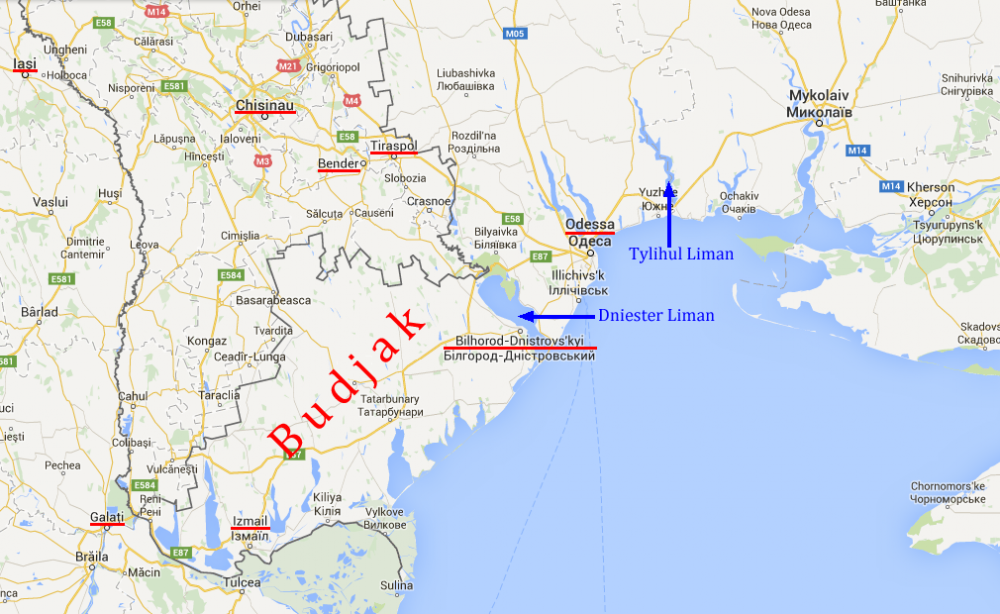
Ultimately Russian forces will try to expand the territory under their control eastward until they reach the Tylihul Lyman (Lyman= shallow river estuary), which with its length of 60km and width of up to 4km forms a natural barrier. How far North Russian forces will go north is unclear as there are no natural barriers north of Odesa, and occupying Ukrainian territory up to the northern point of Transnistria would create an unsustainable 200km front line. Therefore Russia will probably anchor its frontline on the Transnistrian border about 25km North of Tiraspol and from there have it go in a straight line to the northern end of the Tylihul Lyman. This would leave most of Transnistria exposed to a Ukrainian attack, but the Kremlin will insist that Transnistria is neutral and any Ukrainian attack on it would lead to all-out war between Russia and Ukraine, as Russia would be obliged to defend its “innocent” ally.
Russian forces would also advance south from Odesa to occupy the Budjak region. The Budjak is a multi-ethnic region to the South of Moldova between the Danube and Dniester. Until 1940 it was part of Moldova, but the Soviets decided to add it to the Ukrainian SSR. Today the Budjak is separated from Ukraine by the Dniester Lyman and only reachable by two roads: one passing over the outlet of the Lyman at Zatoka, the other passing through the Moldovan city of Palanca. If Russia were to occupy the Budjak, Moldova would become indefensible. Russia would be able to strike into Moldova from the South without any natural barrier in its way and it would be able to block Romanian reinforcements by destroying the Bug and Danube river bridges. But worst of all: Gagauzia lies directly at the Budjak border. With Budjak in Russian hands, Russia could replay the Donbas scenario, including incursions by Russian troops into Moldova, cross-border artillery fire and unlimited supply of weapons and mercenaries to sustain and expand a Gagauz war.
Therefore the moment Russian forces land in Odesa, Romania will be forced to occupy the Budjak. Immediately the 630th Paratrooper Battalion must be flown to the Dniester Lyman to occupy Zatoka and Palanca. Additionally the bridges in Zatoka and Mayaky need to be blown up, while the road from Mayaky to Palanca needs to be mined extensively. At the same time the 528th Reconnaissance, 284th Armored and 300th Mechanized Infantry battalions of the 282nd Mechanized Brigade, which are all based in Galaţi at the Ukrainian border, must rush to Izmail in Ukraine to occupy the airfield there and thus block a Russian airborne landing. As the 630th Paratrooper Battalion is too weak to defeat a Russian armored attack, the rest of the 282nd Mechanized Brigade needs to advance into the Budjak as well. Romania’s 1st and 9th Mechanized Brigades will have to follow within days as reinforcements for the Dniester Lyman front, while the 2nd Infantry Brigade will be needed to control the Budjak itself. At the same time Romania’s 15th Mechanized Brigade will have to drive to Chișinău to secure Moldova’s capital against a Transnistrian-Russian attack, with the 81st Mechanized Brigade following as fast as possible.
Ultimately Romania will garrison the Southern side of the Dniester Lyman with the 1st Mechanized Brigade, while the 9th Mechanized Brigade will guard the Budjak’s coast against Russian amphibious landings and the 2nd Infantry Brigade will patrol the Budjak itself to prevent Russian stirred unrest. Romania’s 15th, 81st and 282nd Mechanized Brigades will, along with Moldova’s military, will guard the front between Moldova and Transnistria. Ukraine will actually welcome this occupation of its territory as it ensures that the Budjak will not fall into Russian hands and as it will force Russia to keep thousands of troops along the Dniester river to match Romania’s deployed forces.
Russia will be incensed and threaten Romania massively, but if Putin still retains some scraps of sanity then Russia will ultimately acquiesce to the Budjak’s occupation. As Ukraine will publicly approve the Romanian intervention Russia will be unable to seek a UN Security Council debate. As Russia occupied Crimea and then annexed it, it has no moral authority to castigate Romania. As Romania will have five mechanized brigades at the Dniester, with four brigades in reserve and will be supported by three Molodvan brigades, with at least two Ukrainian brigades to the North of Odesa, the Russian-Transnistrian forces will be outnumbered 2:1. As Romania could cut Russian supply lines to Odesa and as an attack on Romania would bring the United States into this war,, Putin, if still sane, will ultimately acquiesce, especially as his main goal isn’t annexing Moldova, but destroying Ukraine and breaking NATO by invading the Baltic States.
In the end it is much less risky for Romania to occupy the Budjak and send its army into Moldova than to sit idly by while Russia occupies the Budjak. If Russia occupies the Budjak there will be a Russian organized “Gagauz Peoples Republic”, which will lead to Southern Moldova sliding into war, which will lead to Transnistria attacking Moldova, which will lead to Russia occupying and enslaving all of Moldova, which will lead to a Russian-Romanian war, but under far worse conditions for Romania. Therefore the best course of action for Romania is to update its current defense plans, which already include the defense of Moldova, and coordinate with Ukraine on how to occupy the Budjak as quickly as possible when Russia lands forces in Odesa.
Furthermore Romania and Moldova need to prepare laws and treaties to rapidly reunite, because even if Russia grudgingly acquiesces to the occupation of Budjak, there is a high risk that Russia will take revenge by initiating an offensive by its Transnistrian proxies against Moldova. To stop such a Russian offensive before it can happen Moldova and Romania should reunite, while declaring Transnistria to be a temporarily occupied territory. If Russia then annexes Transnistria, it will just incur more sanctions. If Russia then stirs up renewed Transnistrian-Moldovan fighting, it will actually be a Transnistrian vs. NATO-member Romania fight. A fight Russia cannot win because the only way to supply its forces in Odesa is via sea and air lanes near Romania’s territory.
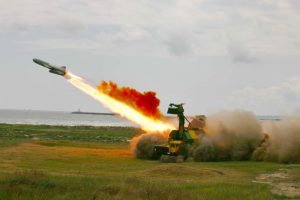
If Russia fights only against Ukraine, its ships and planes can avoid Ukraine’s coastal artillery, air force and air-defense by crossing the Black Sea 150km to the South of Ukraine and then sail to Odesa as close as possible to Romania’s and the Budjak’s coast. Thus for the first half of their trip Russian supply transports will be out of range of Ukraine’s defenses, whereas on the latter half of the trip they will be so close to Romanian-controlled territory that Ukraine will have to hold its fire. It is only for the last 40km that Russia’s supply lines would be in Ukraine’s range; however this will only be true if Romania occupies the Budjak. If Russia were to control the Budjak, Russian naval supply lines would end at the port of Bilhorod-Dnistrovskyi on the Southern side of the Dniester Lyman, while aerial supply would be flown to the airfield at Izmail. This would make it impossible for Ukraine to disrupt Russian supplies to Odesa and is just one more reason Ukraine should invite Romania to occupy Budjak.
If the Kremlin should choose to commence military operations against Romania, then Romania’s armed forces will massively disrupt the Russian supply route to Odesa and thus put Russian forces in Odesa under siege. Such a siege could only be broken if Russia would attack Romania with the full might of its air force and navy, which would definitely bring NATO and especially the US into the war. Therefore I assume Russia is more likely to begin a war of harassment and attrition against Romania similar to the War of Attrition Egypt fought against Israel along the Suez Canal from 1967 to 1970: namely a continuous series of artillery duels, special forces raids, aerial combat and naval engagements along the entire front, but with no major offensives.
Romania would have to fight such a war on its own as the cowed and weak politicians of the European Union will do everything to wiggle out of NATO’s Article 5 Common Defense unless Russian forces clearly–in force and with their insignias on clear display–enter Romania proper. Romania would fare well on land in such a war of attrition, but only ok at sea, and disastrously in the air.
On land Romania would have the Dniester between itself and Russian forces, which would also have to fight Ukrainian troops to their North. Only at Bender would Russian forces be on the Romanian side of the Dniester, but Romania can easily take the only bridge at Bender under artillery fire, and with two Romanian mechanized brigades deployed in the area, Russia would need to bring additional forces from Russia to the Odesa cauldron before being able to mount an offensive at Bender, which would give Romania enough time to destroy the Bender bridge. Furthermore Transnistria’s and Russia’s equipment in the area is atrociously outdated and all modern equipment shipped from Russia to Odesa would have to pass through a deadly gauntlet of Romanian coastal missile artillery and naval forces and through sea lanes mined to the brim. Therefore even if Putin would demand a ground offensive at Bender, there is little chance for Russia to mount one, especially as Romania would be supplied generously by America with Javelin missiles and other advanced equipment.
Still, Romania’s army equipment is outdated and needs to be replaced in its entirety: new main battle tanks to replace the obsolete TR-85M1 tanks with their weak 100mm gun; new infantry fighting vehicles to replace the MLI-84M, which combines an obsolete BMP-1 chassis with a modern remote turret; Romania already procured 31 Swiss Piranha IIIC wheeled armored personnel carriers, but a further 600 are needed to replace the outdated BTR-60/70/80 variants in service; towed 155mm howitzers and self-propelled 155mm howitzers are needed, as are surface-to-surface guided missiles, anti-tank guided missiles, man-portable air-defense missiles, a medium range air-defense missile system and drones. This makes Romania, along with Poland, one of only two interesting European nations for the global defense industry. However as Romania’s government spending is still under IMF control and as Romania needs modern equipment as quickly as possible and as it has a strong local defense industry, only those nations who can “donate” modern equipment to Romania right away and are willing to outsource much of the production to Romania, can hope to enter the Romanian market.

Let me give you an example: Romania urgently needs a new main battle tank, which its arms industry could produce with foreign help. However even before production in Romanian could commence, Russia and Romania might be already in the middle of a war. Therefore i.e. if Germany would offer Romania 54 of its stored Leopard 2A6 tanks for free now, with the understanding that Germany’s KMW would then produce a further 250 tanks in Romania and get paid a higher price for the new tanks to compensate Germany for the 54 “donated” tanks, Romania would instantly agree to such a deal, as it would provide Romania with a modern tank battalion now, would not need IMF approval and would strengthen Romania’s defense industry.
As Romania’s Army has to this point almost no Western equipment, all Western defense companies can compete for the many needed weapon systems: America’s M1A2 Abrams, France’s AMX Leclerc, Germany’s Leopard 2A7, Britain’s Challenger 2, even South Korea’s K2 Black Panther, Japan’s Type 10 or Israel’s Merkava IV tank – the market is wide open for the nation that finds a way to help Romania circumvent the IMF-imposed spending limits.
As for new infantry fighting vehicles: Italy’s Dardo, Spain’s Pizzaro, Germany’s Puma, Sweden’s CV-90, South Korea’s K21, America’s M2A2-ODS Bradley, Japan’s Type 89 are all possible options. The possible options for wheeled armored personnel carriers are too numerous to list, but as Romania’s industry is definitely capable to produce this kind of system, the nation willing to shift most of the production to Romania will get the deal. For the self-propelled and towed 155mm howitzers Romania can choose between the self-propelled German PzH2000, American M109A7, Polish AHS Krab and South Korean K9 Thunder, while for the towed variant the only real option is the American M777 howitzer. As for surface-to-surface guided missiles there too is just one option: the American HIMARS system with MGM-140 ATACMS Block IVA.
Last but not least the only two anti-tank guided missiles that any nation should buy are either the Israeli Spike or the American Javelin, supplemented by Swedish MBT LAW light anti-tank missiles. As for man-portable air-defense missiles and a medium range air-defense missile system: either the American FIM-92F Stinger or the Polish GROM 2 should be licensed for production in Romania, while clearly the American-Norwegian NASAMS II is the frontrunner for the medium range air-defense system. If Romania will settle on the NASAMS II, it should acquire it jointly with Poland to reduce unit costs.
Romania’s army also needs more unmanned aerial vehicles, i.e., drones. While on deployment in Iraq, Romanian troops used the American ScanEagle, one of the best naval drones. Romania should acquire a dozen ScanEagles and split them between its Army and Navy.
Romania’s Navy, while numerous, is outdated and lacks submarines and air defense frigates. Currently Romania’s fleet consists of 13 surface combatants and a Kilo-class submarine, which cannot dive and is moored permanently in Constanța harbour. Romania’s two Type 22 frigates lack air-defense missiles and a close-in weapon system to shoot down incoming missiles. However as Romania’s main goal in a war with Russia will be to deny Russia the use of the Black Sea between Crimea and Odesa, the acquisition of modern air-defense frigates isn’t as urgent as the acquisition of a long-range air-defense system, modern sea mines, submarines, long-range anti-ship missiles, and anti-submarine warfare helicopters.
By buying American MIM-104 Patriot air-defense systems and deploying them along the coast of Romania and the Budjak, Romania can create a protective umbrella for its fleet extending 100km into the Black Sea. Romania’s currently most advanced air-defense system is the MIM-23 Hawk XXI with a range of 50km, which is not enough to protect Romania’s fleet while it harasses Russian supply lines. As the US Army stores dozens of surplus Patriot systems, Romania could quickly put this system into service. Having eliminated the threat of Russian aviation, Romanian ships should lay dozens of sea mines in the approaches to Odesa to force Russia’s Navy into an endless mine-sweeping operation. Acquiring submarines will force Russia to send supply ships only in heavily guarded convoys to Odesa. With submarines Romania could even attempt to mine the exits of Sevastopol bay and thus blockade Russia’s Black Sea fleet in port until the mines are cleared. Because the designing and construction of submarines takes years, Romania needs to buy used submarines from one of its NATO allies. Currently Italy offers two 25-years old, but modernized Sauro-III submarines for sale, which are still better than anything the Russian Navy has in the Black Sea.
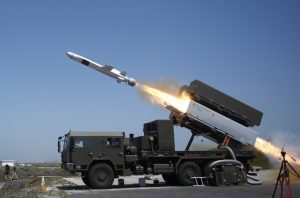
Replacing its Soviet-engineered 4K51 Rubezh anti-ship coastal missile system with a more capable long-range anti-ship missile system like the Norwegian Naval Strike missile or the Swedish RBS-15 missile will provide Romania with a system capable of sinking enemy ships up to 200km from its shore. Such a truck-mounted, long-range missile system, protected by Patriot and Hawk XXI air-defense systems would effectively deny Russia’s Black Sea Fleet the use of the gulf between Odesa and Crimea.
As Russia plans to add six submarines to its Black Sea Fleet, buying anti-submarine warfare helicopters would greatly improve Romania’s capability to detect, engage and sink Russian submarines lurking outside Romanian harbors. Romania already has three French-designed and Romanian built IAR 330 naval helicopters that are being modernized for the anti-submarine warfare role, however at least six additional anti-submarine warfare helicopters should be acquired.
Romania’s Navy currently has six missile-boats and seven corvettes and frigates on its rolls, none of which possess an air-defense system, making surface sorties outside the Patriot provided air-defense umbrella risky. To augment the fleet with air-defense missile frigates Romania could either acquire used Italian Soldati-class frigates, of which Italy currently offers four for sale, or buy German Bremen-class frigates, eight of which Germany is currently taking out of service. Romania will need to build faster, more agile, stealthier, better equipped and armed missile boats and corvettes; Romania should commence development of such a class within the shortest time possible. Ideally Romania would seek the advice of Finland, which is the undisputed leader in building heavily armed and fast multi-purpose corvettes like the Hamina-class missile boats.
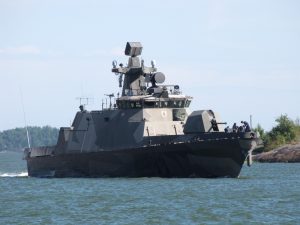
If Romania speedily acquires the key systems mentioned above its Navy will be able to remain undefeated in a war of attrition against Russia and be able to protect Romania’s coast from Russian attacks. This ability of Romania to remain undefeated in a war of attrition against Russia would be even further enhanced if Romania would be able to acquire more modern fighters for its air force. Currently 12 F-16AM/BM Block 15 MLU ordered from Portugal’s stock are the most modern fighters in Romania’s arsenal. This is not enough, not by a long shot.
In a war of attrition against Russia, Romania would see its 12 F-16 and 36 MiG-21 LanceR destroyed by Russia’s air force within weeks. Romania needs at least 48 additional F-16 fighters as soon as possible. However the price for this number of jets is out of reach for Romania, and therefore the only option for Romania is, just as for Bulgaria, to lobby the United States to provide 48 used American F-16C/D Block 40/42 fighters, which can be upgraded in Türkiye via the US licensed Common Configuration Implementation Program to Block 50/52+ fighters. If Romania succeeds in this endeavour, then it will be able to withstand a Russian war of attrition on land, on the sea and in the air.
Ultimately Russia cannot win a war of attrition against Romania if Romania controls the Budjak and ensures its air-defense is modernized. Only an all-out attack by Russia’s air force and Navy could then break the Romanian line of defense along the Budjak’s coast or on the Dniester, but that would see the US military enter the fight and annihilate Russia’s Black Sea Fleet and devastate Russian forces in Odesa. Therefore I assume that Russia will keep its focus on combat against Ukraine while keeping its war of attrition against Romania at a low boil. This stalemate could naturally be broken if Romania and Ukraine would go on the offensive in a joint operation.
A joint Ukrainian-Romanian attack on Transnistria and Russian forces in Odesa would overwhelm the Russian forces there quickly. However Putin made it clear that if he were to lose a battle, then he would use tactical nuclear weapons against the attacking force to “de-escalate the situation.” If it comes to this, then Russian forces on Crimea will fire Iskander-M short-range ballistic missiles with nuclear warheads against Romanian and Moldovan cities to cow both into surrender. The only possible defense would be for Romania to acquire additional MIM-104F Patriot batteries in the ballistic missile defense role, as the US Navy‘s Aegis Ashore Ballistic Missile Defense system activated this year at Naval Support Facility (NSF) Deveselu is based too far inland to effectively protect Romania’s coastal cities and Moldova.
Romania would be even smarter to avoid going on the offensive and patiently wait for Russia to bleed out economically, or wait until the Kremlin loses it patience and either attacks Romania or the Baltic States and then loses the ensuing NATO-Russia war. Afterwards Romania and Ukraine could divide Transnistria among them with the Romanian settled areas joining the united Romanian nation, while Ukrainian settled areas would revert back to Ukraine, thus eliminating the last remnants of the 1924 communist artificial creation of the Moldavian Autonomous Soviet Socialist Republic.
If Russian Forces Come by Land: World War III Scenario
Well, if Russian forces come by land, then Putin has started World War III. For Russian forces to reach Transnistria by land Putin would have to commit most of Russia’s armed forces to the offensive. All pretense of Russia not being involved in this war would disappear with Russian forces pouring out of Crimea and advancing to Kherson and Zaporizhzhia and assaulting Mariupol, while Russian paratroopers take the Dnieper bridges and the Russian bombers attack Ukrainian air fields.
If that happens, then we all will know that Putin will have gone from crazy, to totally bonkers. That war will affect us all: in Europe and in the US, as well as in Asia and in Africa. First there would be massive bloodshed as Ukrainians will fight the invading forces ferociously, with Kharkiv, Kyiv and Dnipropetrovsk coming under Russian siege. Romania would then be confronted not with two or three Russian brigades with strained supply lines, but with five to six well-supplied Russian brigades, which would definitely cross the Dniester and attempt to occupy Moldova and Budjak.
Romania would be just the first nation to be drawn into this full-scale war. Belarus would be the next, although I find it hard to predict which side Lukashenko would join. Putin could also set his sights on Azerbaijan, a oil and gas rich former colony of Russia, but Türkiye would certainly intervene on Azerbaijan’s side. Those NATO members still believing in common defense would then deploy forces to protect the Baltic States and Romania, which would lead to the aforementioned “nuclear de-escalation” by Putin at which point either the West retaliates with all the possible terrible consequences or Europe surrenders and allows Putin to dominate the continent. Such a scenario would mean Europe will sink into corruption, cronyism, despotism, persecution of sexual minorities, institutionalized racism, militarism, persecution of critical minds, poverty, cultural stagnation and murder of opposition exponents… in other words: Europe would follow Russia into its corrupt, criminal, fascist abyss.
While a Russian attack on Mariupol is inevitable, an attack on Kharkiv likely and an attack on Odesa a certainty, I hope Putin will not advance by land to Transnistria or attack the Baltic States this year, because after the next Russian offensive in Ukraine, Europe will finally chase out its corrupt, stupid, cowed political class and replace it with men and women who will “match our enemies in fighting spirit, in daring, in resolution and in thirst for victory.”
Just as Great Britain’s parliament finally turfed out the appeasers after the setbacks of the Norwegian Campaign, come another Russian offensive, heads will roll in Europe and that will be joy to behold. And I have cooled champagne for it already.
Part I: Where and how Romania will fight Russia – Part I



